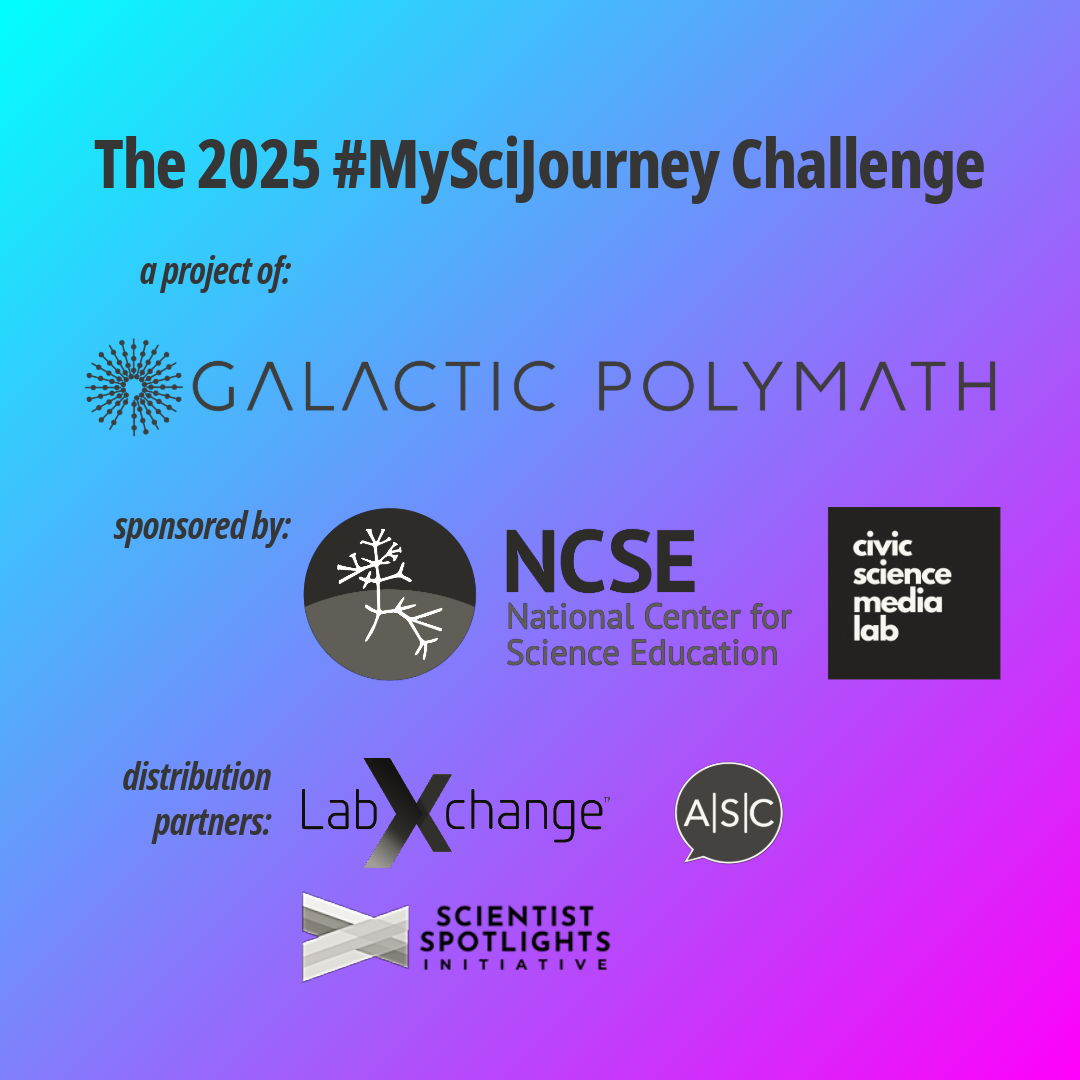Bring Authentic Science Into Your Classroom and Decide Who Wins the #MySciJourney Challenge!
Click here 👆 to watch the videos. Vote with your likes, ask questions and give kudos in the comments! Scientists, we’re still accepting submissions until Nov. 3, 2025!
Peek behind the curtain of cutting-edge research AND help decide the winners of the 2025 #MySciJourney Challenge! Our goal: to give students a window into how real scientists navigate, repeat, and remix key scientific processes to create new knowledge. The #MySciJourney playlist contains short (~3 min.), engaging videos where scientists use our SciJourneys World Map to show what "doing science" looks like for them.
Now it’s up to you and your classes (and anyone else reading this!) to help decide the winners of the challenge. Have your students watch, like, and comment on their favorite #MySciJourney videos by November 15 (and be sure to check back between now and November 3 for new additions to the playlist).
Winners will be announced November 18 on our Instagram, BlueSky and LinkedIn accounts (Follow us!) Thanks to our sponsors The National Center for Science Education and Civic Science Media Lab, cash prizes and acclaim will be awarded to the three scientists whose videos have the highest engagement.
Read on to learn more about SciJourneys and how this contest came about!
Why the Nature of Science Matters
…by acknowledging that science contains multitudes, we empower students who have a wide variety of skills, interests, and backgrounds to see themselves in science.
Thanks to our funders: NCSE and Civic Sci Media Lab, and distribution partners: LabXchange, the Association of Science Communicators, and Scientist Spotlights! If your org would like to partner and distribute this project to your members, shoot us an email!
As a historian of science, STEM educator, and science communicator, I’m convinced of two things: 1) real science is much more varied, dynamic, and surprising than the scientific method most of us learned in school, and 2) growing a science-engaged society means equipping students with the creativity and resilience to navigate the twists and turns of scientific discovery.
Science teachers are well aware that pedagogy has moved toward greater emphasis on the “nature of science” (NOS). In a position statement on NOS, the National Association of Science Teachers acknowledges that “no single universal step-by-step scientific method captures the complexity of doing science.” Yet the myth of a linear, monolithic scientific method persists, largely due to a lack of alternative frameworks — particularly one that is meaningful and engaging for students — to capture how science really works.
Why does this matter? A deeper, more nuanced understanding of scientific processes is vital for the public to appreciate the unique power and promise of science as a way of knowing the world. In fact, science is successful precisely because it leverages diverse approaches and perspectives. And by acknowledging that science contains multitudes, we empower students who have a wide variety of skills, interests, and backgrounds to see themselves in science. I like to imagine a world where we no longer ask, “Do you like science?” and instead ask, “What kind of science do you like?”
Trailer for our free unit “SciJourneys,” which introduced the world map framework for scientific methods.
The #MySciJourney Challenge builds on “SciJourneys: Building Resilience in Science,” a unit I co-developed with Galactic Polymath to bring this vision into classrooms everywhere. SciJourneys is a reimagining of the scientific method that reflects the complex, multitudinous paths of scientific research, presented with a playful, choose-your-own-adventure aesthetic designed to appeal to middle-grade students and beyond.
#MySciJourney Lesson Ideas
We created this slideshow to make it super easy to bring this resource into the classroom! (see links)
Here are some potential ways to utilize the #MySciJourney video playlist and assess how it impacts your students’ understanding of the nature of science:
Ask students to sketch their impressions of how science works before and after watching the videos.
Ask students to draw a scientist before and after watching the videos.
Gauge the extent to which students hold these misconceptions about science before and after watching the videos.
Invite students to share or journal about what surprised them most from the videos.
Identify which of the NGSS Science and Engineering Practices are present in each video.
Provide students with a review template to track their video ratings (e.g., by shading the number of stars out of five they award to each video).
Customize this Google Slides Presentation to use with your class. (Hit Use Template to Copy to your Google Drive or Click Here to Download as PPTX)
- Ask questions that arise from careful observation of phenomena, models, or unexpected results, to clarify and/or seek additional information.
- Gather, read, synthesize information from multiple appropriate sources and assess the credibility, accuracy, and possible bias of each publication and methods used, and describe how they are supported or not supported by evidence.
Comment below, or email us at scijourneys@galacticpolymath.com, to let us know how you’re using the #MySciJourney playlist with your students!



